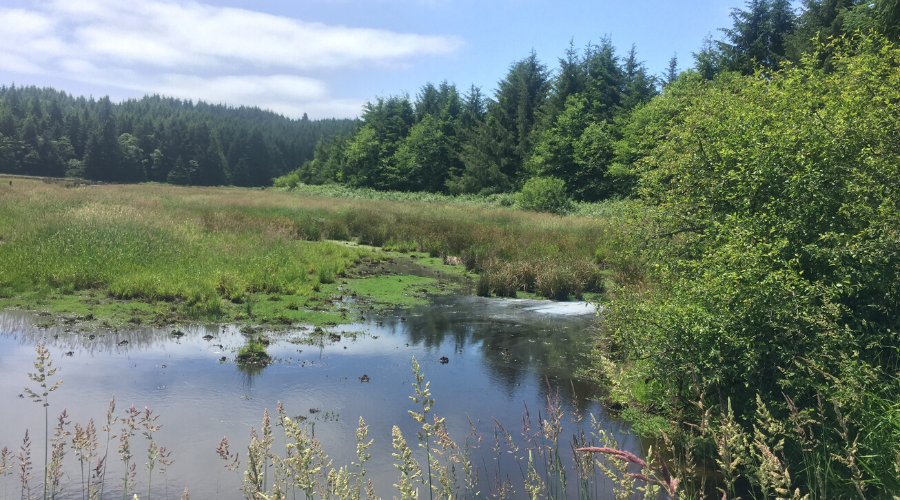
North Coast Land Conservancy’s purchase of 73 acres of wetlands south of Tillamook today (July 30, 2020) is the first step in a proposed restoration of the tidal floodplain along the Tillamook River.
Restoration of Tillamook River Wetlands, a collaboration between NCLC and Tillamook Estuaries Partnership, will complement similar projects already under way on the Miami, Kilchis, Trask, and Wilson Rivers. “With this acquisition and the restoration we’re planning,” said NCLC Associate Director Jon Wickersham, “all five major rivers that enter Tillamook Bay estuary will have seen major progress in restoring wetland salmon rearing habitat.”
Many animals depend on the availability tidal wetlands to complete their life cycle. But much tidal wetland property on the Oregon Coast has been converted to agriculture and other development requiring flat land. Activities such as levee construction, diking, draining, and filling have altered or eliminated 85 percent of Tillamook Bay’s once-expansive tidal wetlands. This has led to a decline in the population of many species, including the federally threatened Oregon Coast coho salmon.
Together with TEP, NCLC plans to allow the Tillamook River to return to a large area of its historic floodplain. Currently the property is separated from the Tillamook River by a berm and four tide gates. By reconnecting the wetland to the river, the project will restore habitat complexity critical to healthy salmon and trout populations and other wetlands-dependent species. Coastal estuaries, where rivers and streams meet the sea and ocean and freshwater mix, are high priority targets for conservation by NCLC. Tillamook Estuaries Partnership bring years of expertise in Tillamook Bay hydrology and habitat reconnection to the project.
The property has historically been used for agriculture but has not been actively hayed or used for grazing for more than a decade. It was purchased from Tillamook Shooters Association, which retained 17 upland acres for possible use as a firearms safety range.
The acquisition was funded in part with grants from the US Fish and Wildlife North American Wetlands Conservation Act and the Oregon Watershed Enhancement Board.
Comments